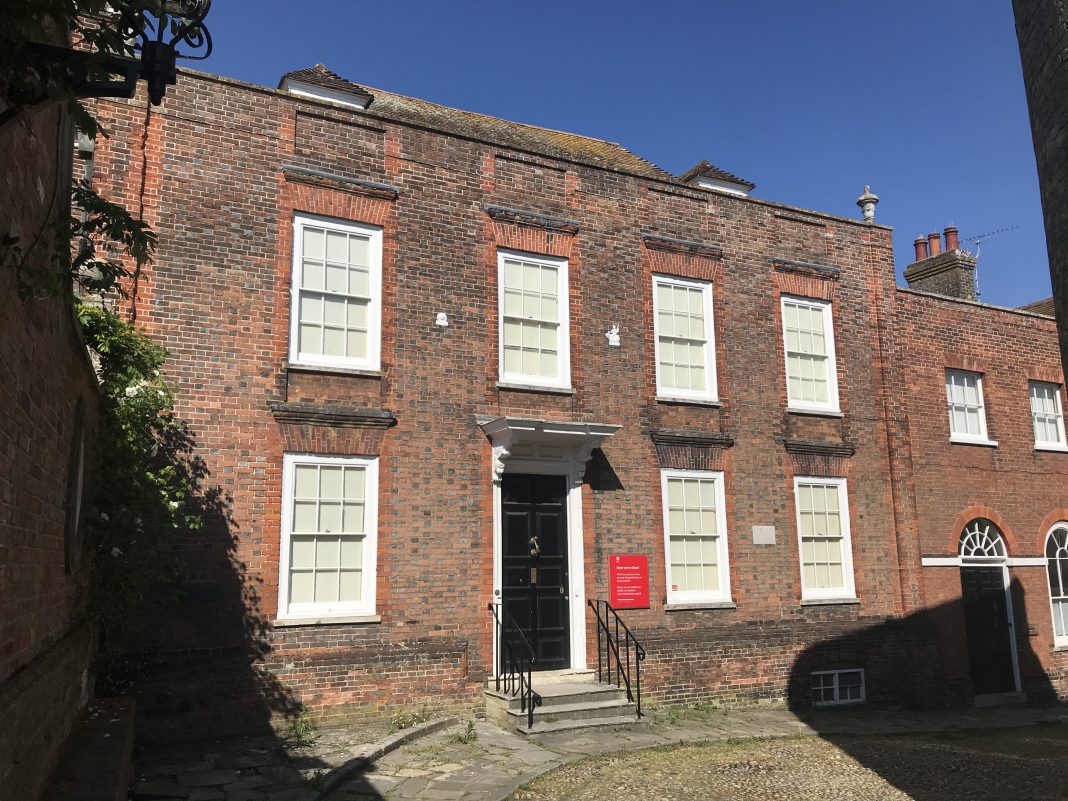Lovers of EF Benson’s Mapp and Lucia books may also be familiar with the tribute works of Tom Holt and Guy Fraser Sampson. In Holt’s Lucia Triumphant, published in 1986, we find a mention of the cape wearing ghost of the Spanish captain, which Lucia sees flitting across the lawn at Mallards, its head glowing in the gloaming, before it vanishes, apparently, through the wall of the house.
When Mapp hears about it, not wishing to be left out of the excitement, she claims to have always known about it, and never been bothered by it. Poor Georgie is terrified at the thought of the spirit somewhere in the house and there is talk of Reverend Bartlett performing an exorcism, which Susan Wyse, a believer in the spirit world, feels could hurt the ghost. (Susan, we know, nearly became, according to her husband Algernon, ‘unhinged’ after accidentally sitting on her budgerigar, Blue Birdie. The late bird’s adventures included a spell as a brooch and hat ornament, a fall into a raspberry soufflé and later as a sort of medium at Susan’s seances, until Lucia ‘miraculously’ arranged its dematerialisation.) So intense was her obsession with the late Blue Birdie that she lost interest in her Rolls Royce car and sable coat. Probably her MBE as well!
The reader is, of course, aware that the ghostly Spanish captain is none other than Georgie himself, taking a turn in the garden after chemically refreshing his auburn hair, leaving it with a sheen likened to that on boiled beef, and wearing his cape to keep warm.
The Spaniard seems to have been based on an actual ghost, seen by EF Benson and the vicar of Rye in 1940. In his autobiography, Benson wrote about a summer day when he and the vicar were sitting in the garden of Lamb House. He wrote that they saw, “…the figure of a man walk past this open doorway. He was dressed in black and he wore a cape the right wing of which, as he passed, he threw across his chest, over his left shoulder. His head was turned away and I did not see his face. The glimpse I got of him was very short, for two steps took him past the open doorway. Simultaneously the vicar jumped out of his chair, exclaiming: ‘Who on earth was that?’ It was only a step to the open door, and there, beyond the garden lay, basking in sun and empty of any human presence. He told me what he had seen: it was exactly what I had seen, except that our visitor had worn hose, which I had not noticed.”
This appearance is the only mention of anything supernatural at Lamb House in Benson’s time, although later residents have said that they felt a presence. Benson himself wrote many ghost stories, as did his brothers, AC and RH Benson, whilst their father, Edward, at one time Archbishop of Canterbury, was a strong believer in supernatural happenings. Whilst at Cambridge, he and a friend formed The Cambridge Society for Spiritual Inquiry. He never felt that this interest was at odds with his Christian beliefs.
Lamb House has attracted several literary residents. Before Benson moved there, the American writer, Henry James made it his home. He wrote his ghost story, The Turn of the Screw whilst living in London, awaiting completion of some alterations to Lamb House. Rumer Godden, author of Black Narcissus and a number of ghost stories, amongst her tally of more than 60 books, lived at Lamb House from the late sixties. She claimed that she didn’t feel completely alone when she was actually alone in the house.
Image Credits: Nick Forman .



